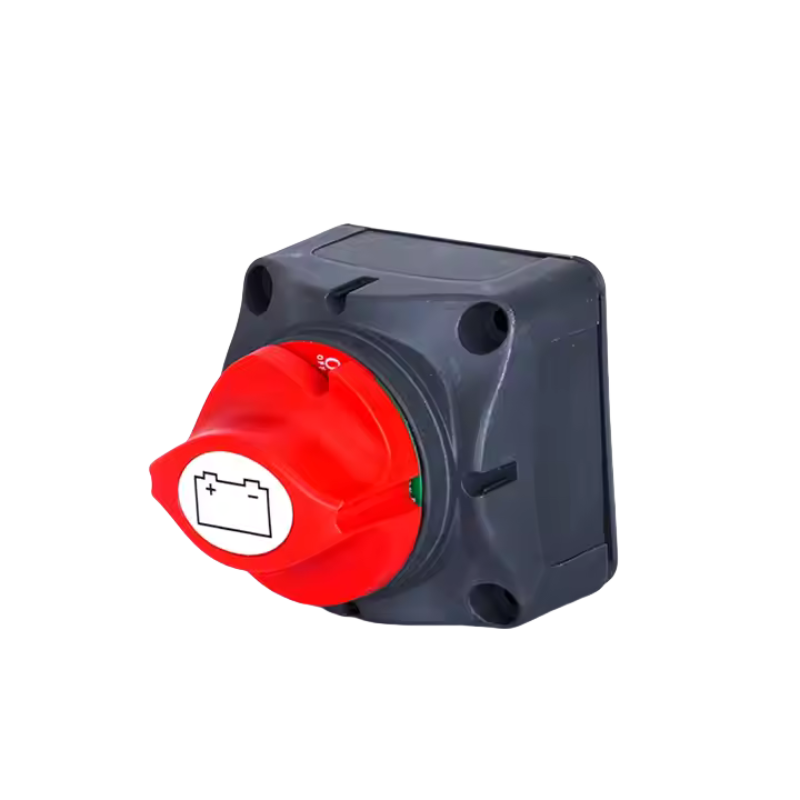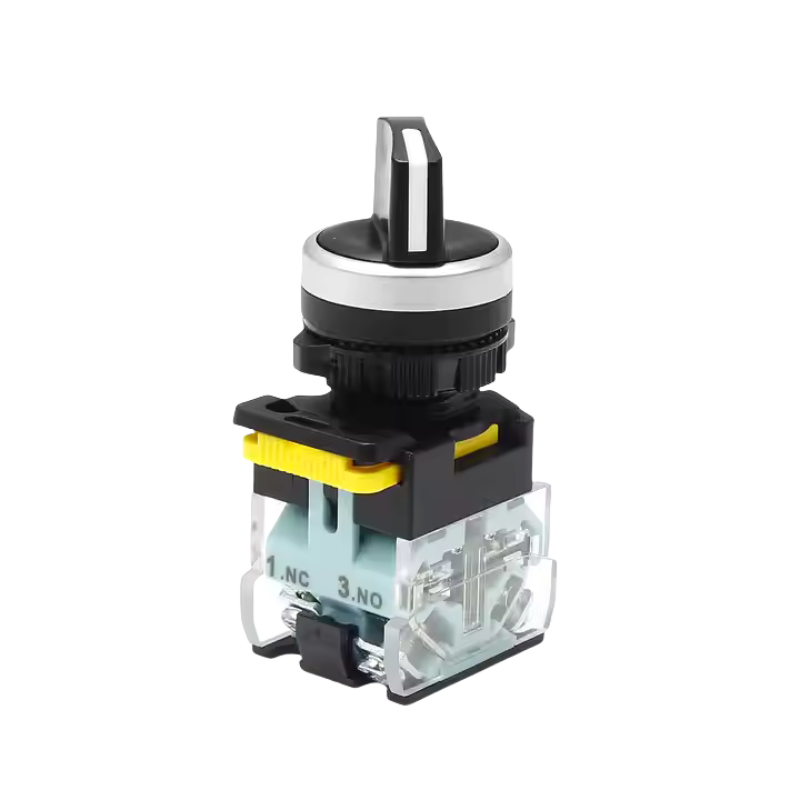Matching Rotary Switches to Your Application
Selecting the right rotary switch requires analyzing electrical demands, environmental stressors, and user interaction patterns. This guide covers systematic selection criteria and real-world implementation strategies.
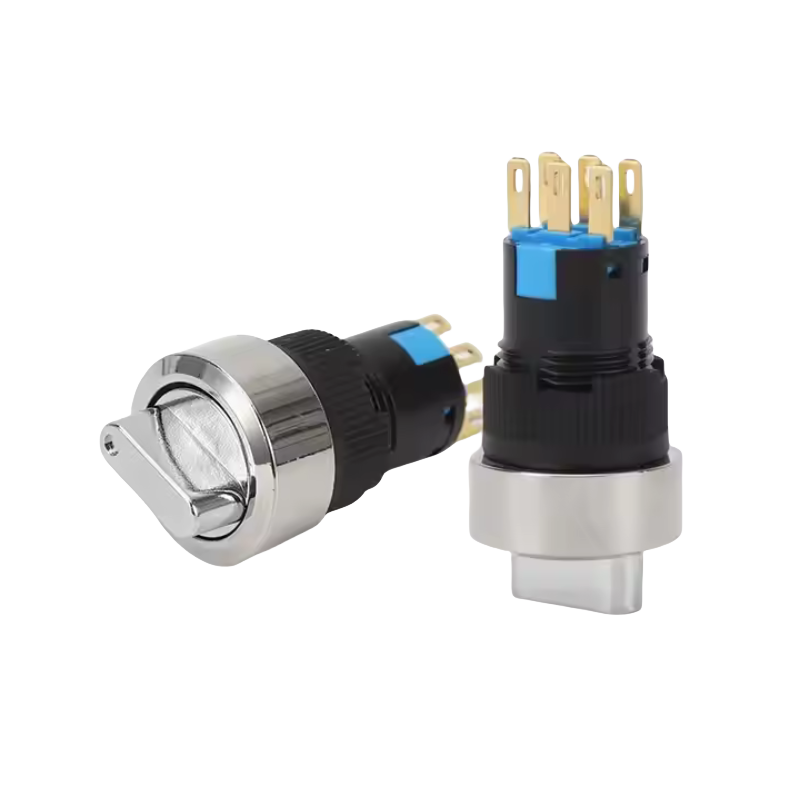
Step 1: Define Electrical Parameters
Load Type:
Resistive (heaters, lamps): Match current rating directly.
Inductive (motors, transformers): Derate current by 50% (e.g., use 10A switch for 5A motor).
Capacitive (power supplies): Include inrush current limiters.
Voltage Requirements:
AC vs. DC ratings: DC systems often require higher contact gaps to quench arcs.
Breakdown voltage: Must exceed peak system voltage by ≥20%.
Step 2: Environmental and Mechanical Factors
Harsh Environments:
Corrosive atmospheres: Hermetically sealed switches with gold contacts.
High-vibration settings: Ball-detent mechanisms for position stability.
Human-Machine Interface (HMI):
Torque: 8–15 N·m for gloves-compatible operation.
Position detents: 30° or 45° indexing for intuitive control.
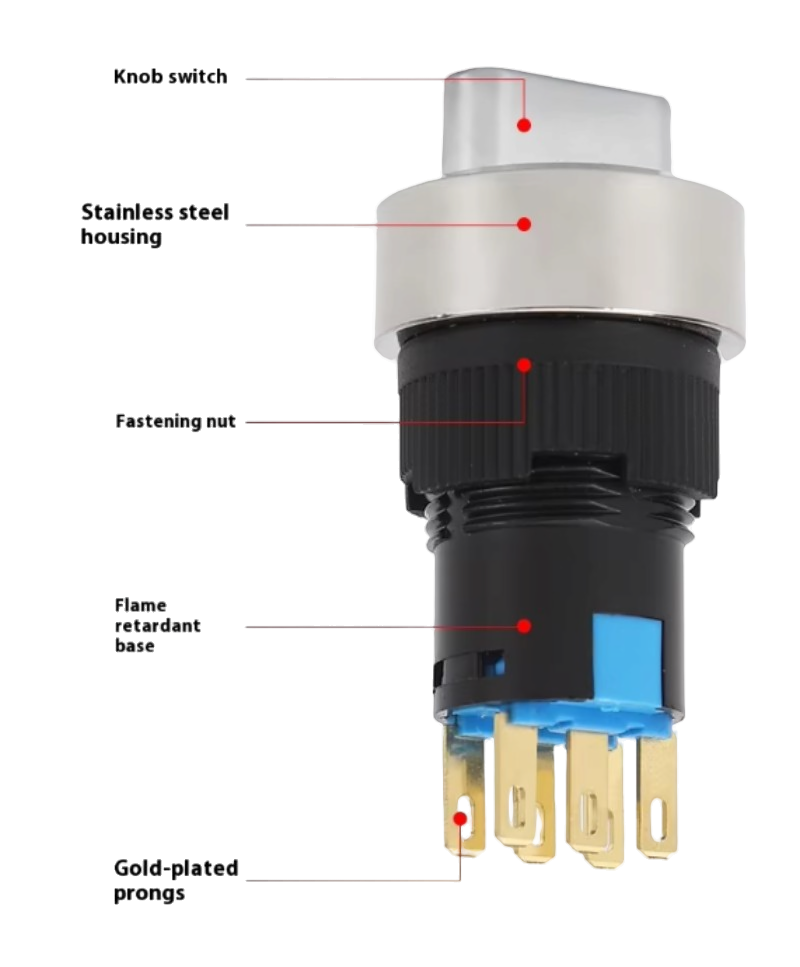
Step 3: Compliance and Safety
Standards: UL 61058, IEC 60529 (IP ratings), RoHS/REACH.
Safety-Critical Systems:
Use MBB (make-before-break) switches in life-support equipment.
Redundant contacts for high-availability systems.
Industrial Case Studies
Manufacturing Control Panels:
Challenge: Dust exposure + 15A motor loads.
Solution: IP67-rated switch with silver-cadmium contacts (current rating: 20A resistive, 10A inductive).
Laboratory Instrumentation:
Challenge: Low-voltage signal integrity (≤1mA).
Solution: Gold-plated contacts with <50mΩ resistance and Teflon insulation.
Avoiding Common Failure Modes
Contact Arcing:
Symptom: Pitted contacts increase resistance.
Prevention: Use BBM switches with arc suppressors for inductive loads.
Shaft Binding:
Cause: Contaminant ingress or misalignment.
Fix: Sealed bearings and stainless-steel shafts.
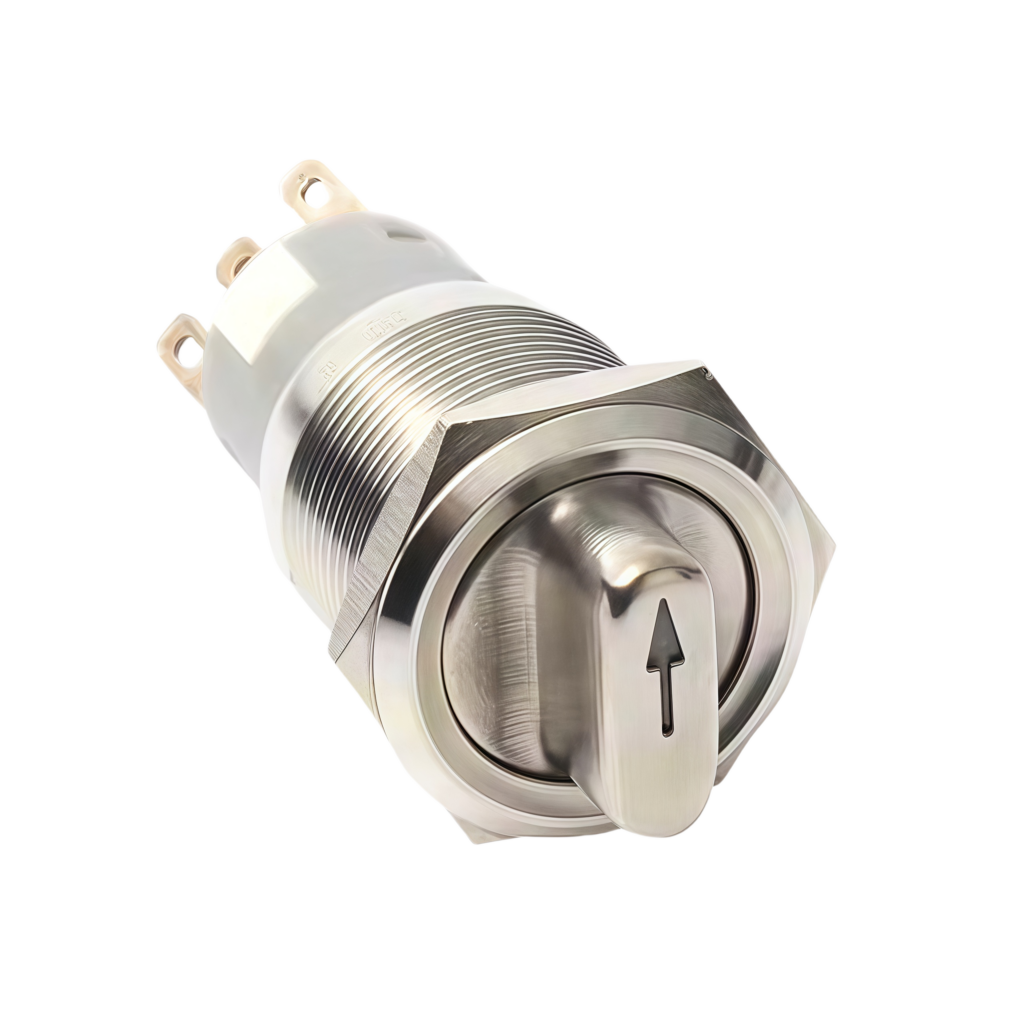
Innovation Trends
Hybrid Digital-Physical Switches: Rotary encoders with Bluetooth output.
High-Temperature Materials: PEEK thermoplastic housings for >150°C operation.
Miniaturization: Sub-10mm diameter switches for IoT devices.
Installation Best Practices
Wiring:
Use ferrules on stranded wires to prevent loosening.
Separate high/low-voltage cables to reduce noise coupling.
Mounting:
Avoid overtightening panel nuts (torque: 0.8–1.2 N·m).
Include grounding lugs for EMI-sensitive apps.

Future-Proofing Your Design
Modularity: Stackable decks for future circuit expansion.
Serviceability: Front-panel replacement without disassembling enclosures.

